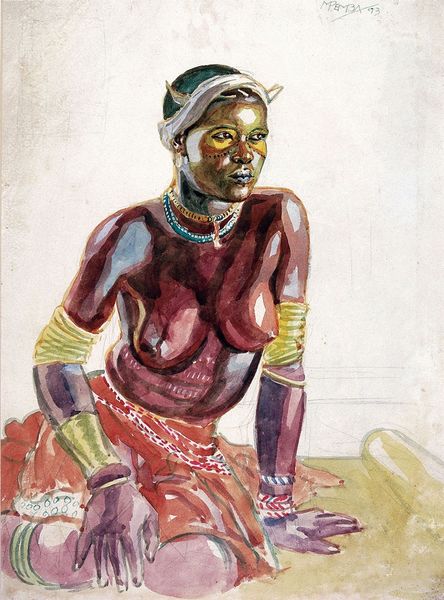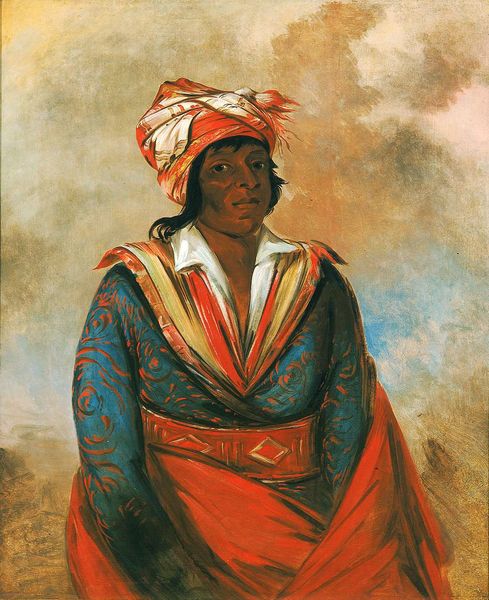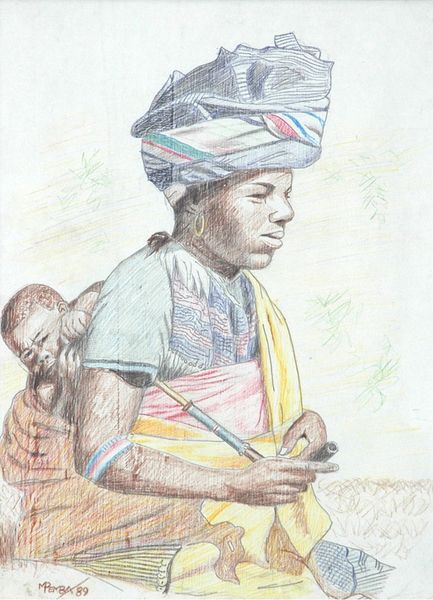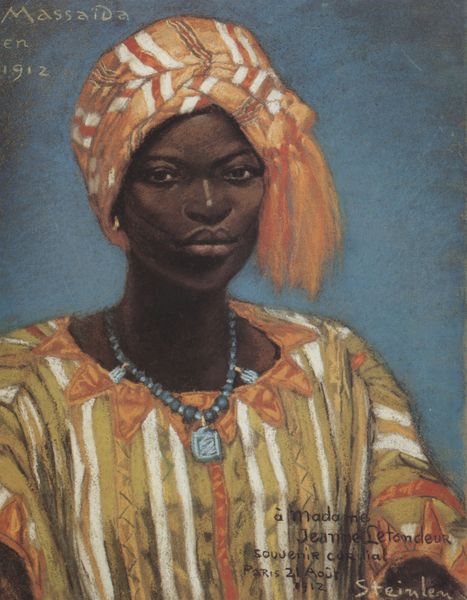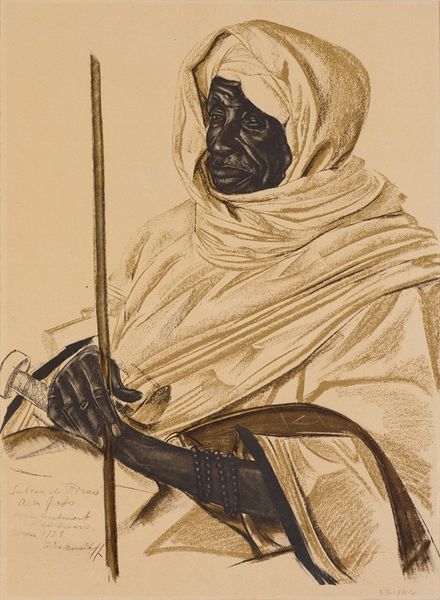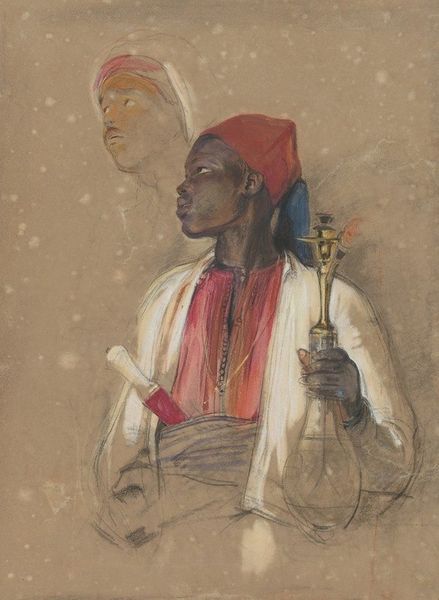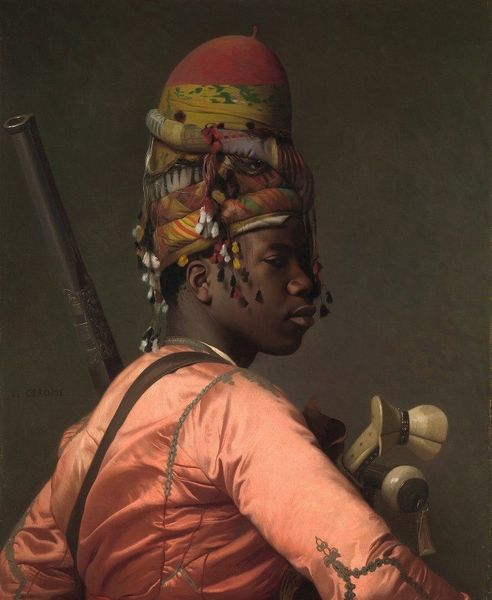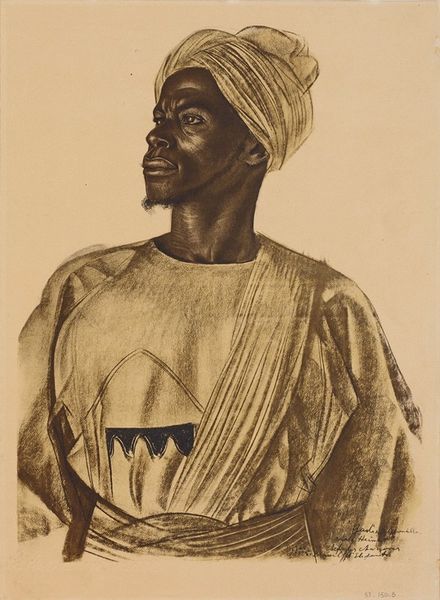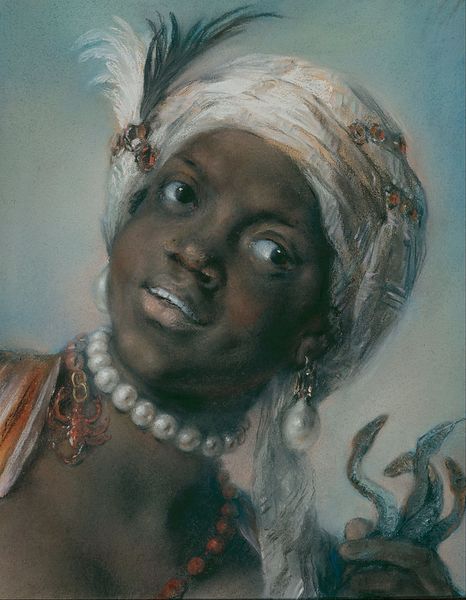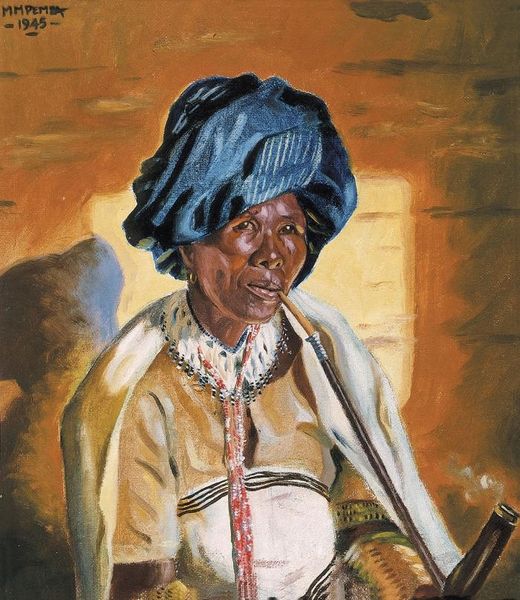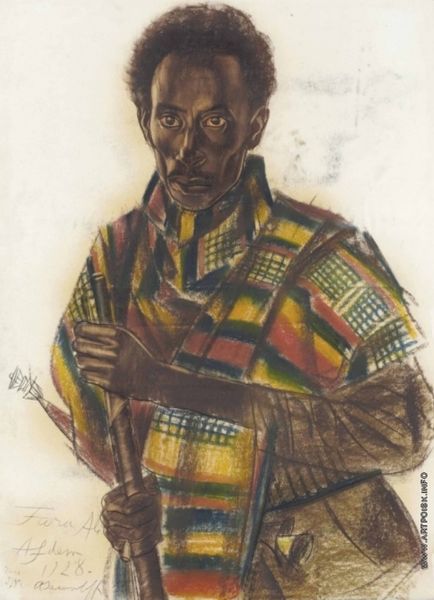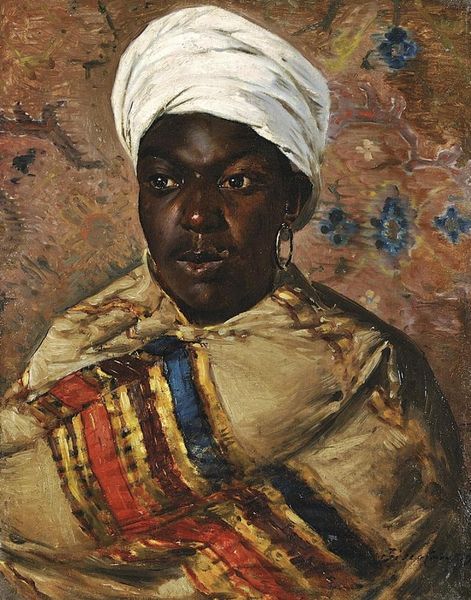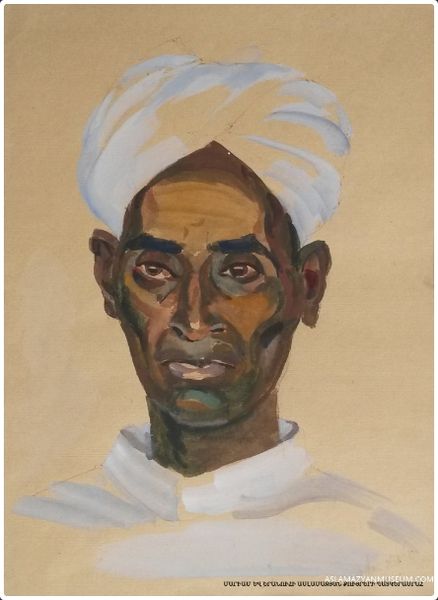
Copyright: George Pemba,Fair Use
Curator: Standing before us, painted in 1944, is George Pemba’s "Basoth woman with headdress," executed in watercolor. Editor: The light is striking; those dusty rose hues wash over everything, imbuing the scene with warmth. The headwrap appears almost architectural. Curator: Absolutely. Notice the delicate brushstrokes. Pemba really captures the texture of the fabric, particularly within the draping and folding of her headwrap. You can see how he lets the watercolor bleed and flow, giving it this loose yet intentional feeling. What does the headdress symbolize to you? Editor: For me, the headdress is power. A symbol of dignity, strength, and identity. It’s visually monumental. I also note how her neck is elongated, maybe reflecting ideas about beauty in certain African traditions, but it also leads my eyes upward toward that dramatic headdress. Curator: Pemba’s attention to details like the pattern in her outer garment adds another layer. There's a sense of geometric order contrasted with organic floral motifs. I wonder about access to these materials in 1944 South Africa and the circumstances that may have affected his choices of color and the very physical limitations of material during that period. Editor: It’s the very texture and slight imperfections that I find powerful. These "limitations," as you say, actually communicate her humanity. I think also of the symbolism behind floral versus geometric design – a representation of two worlds and values in the portrait, reflecting an interplay of cultural symbolism. Curator: The subtle shift in colors also gives clues. The white areas of the blanket serve to reflect light back onto her face. I think that these subtle interactions demonstrate an incredible command of form, a delicate control of what, by many standards, can be an unpredictable medium. Editor: I am particularly struck by the intimate gaze; her direct eye contact projects pride. We are given an entré, however fleeting, into a sacred presence. Curator: Yes. The intentional artistry applied to making every bit of clothing she dons shows incredible respect and love for local craft. Editor: It's clear how Pemba immortalizes her spirit beyond just a mere surface rendering. This allows us to see echoes and fragments of her cultural identity—not merely to understand, but perhaps to feel it too.
Comments
No comments
Be the first to comment and join the conversation on the ultimate creative platform.
